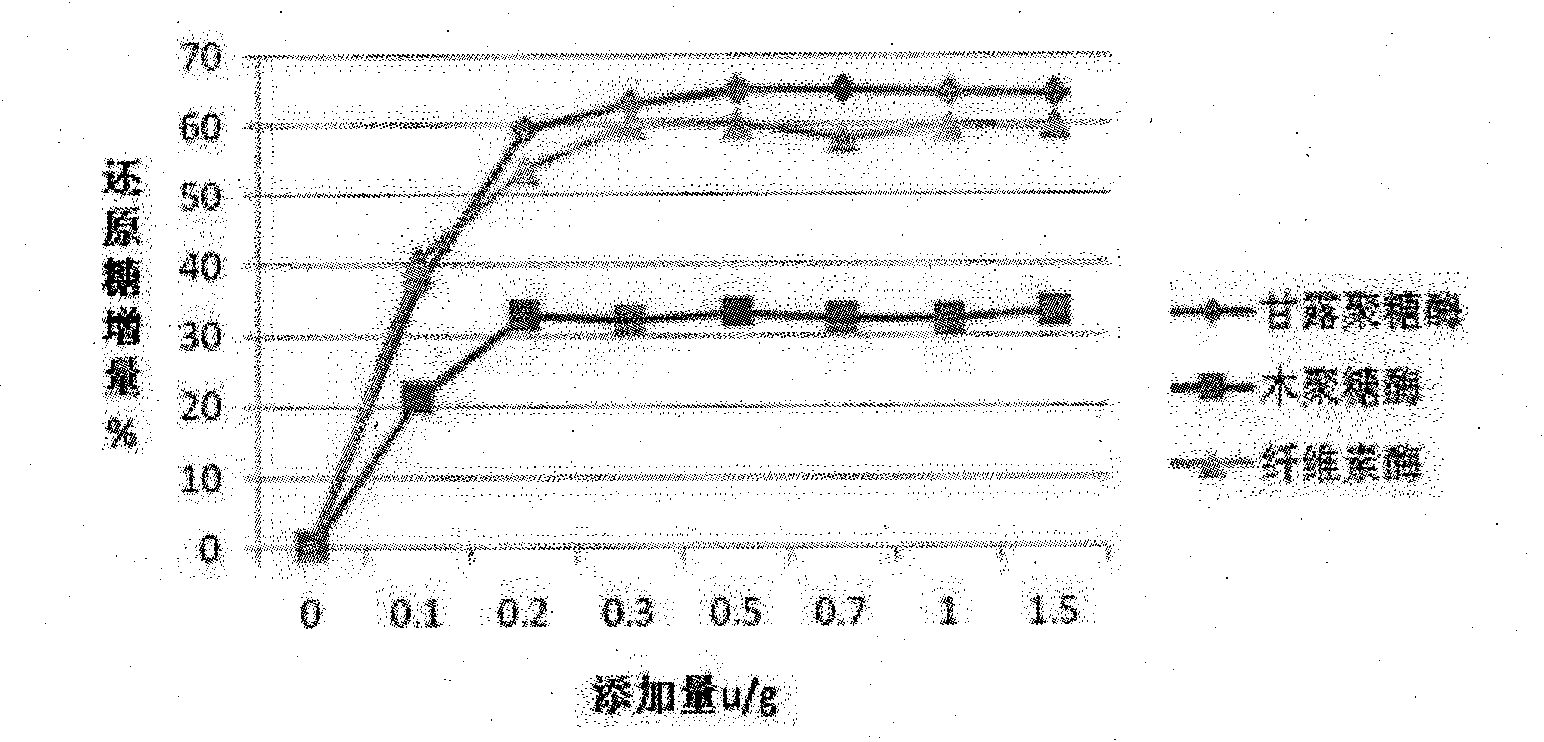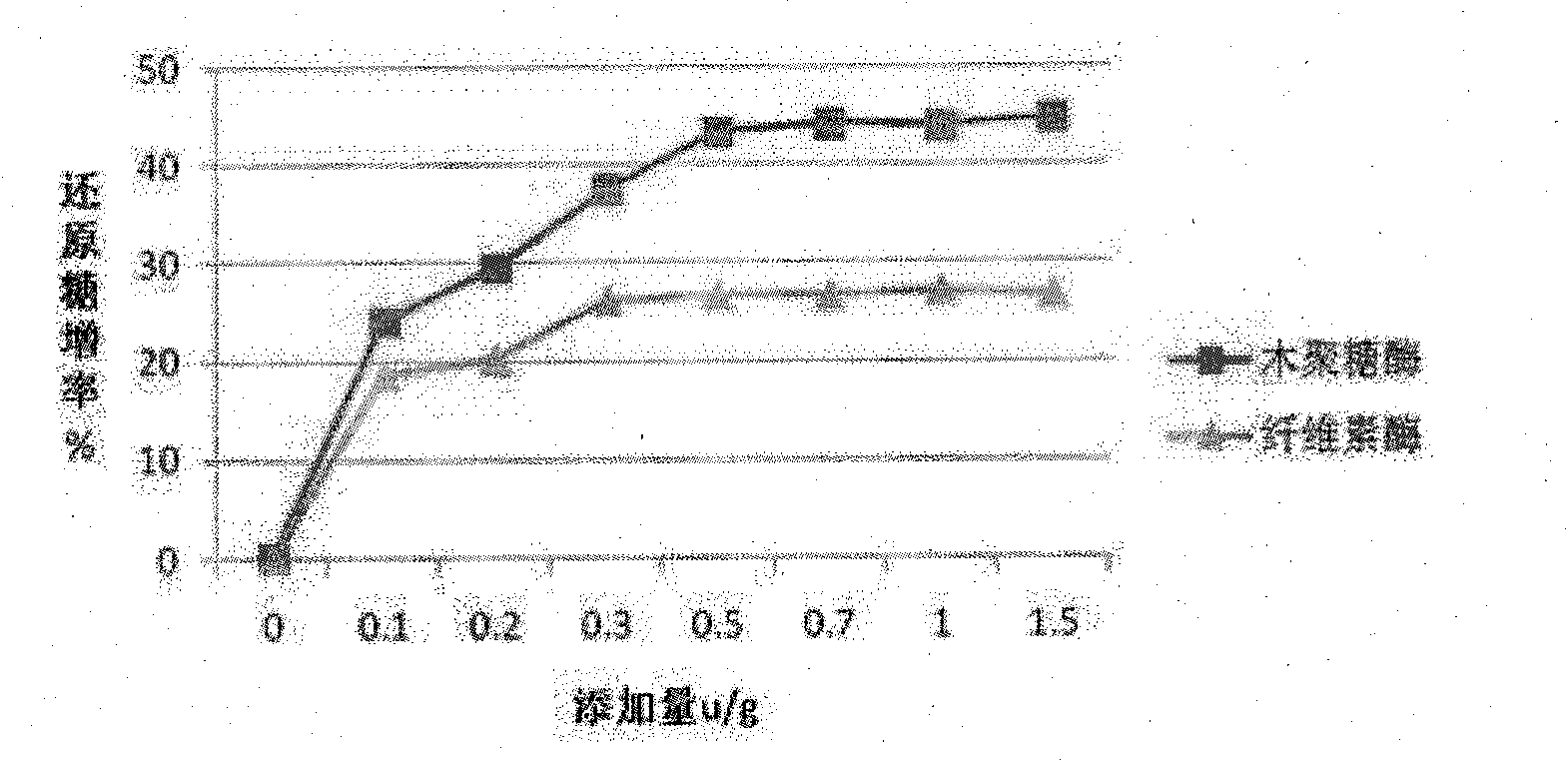Complex enzyme for feed
A compound enzyme and feed technology, applied in animal feed, animal feed, application and other directions, can solve the problems of low utilization rate of animal feed raw materials, reduce anti-nutritional effect, etc., to alleviate the shortage of feed raw materials, reduce anti-nutritional effect, low cost effect
- Summary
- Abstract
- Description
- Claims
- Application Information
AI Technical Summary
Problems solved by technology
Method used
Image
Examples
Embodiment 1
[0064] Compound enzyme formula: xylanase 15000U / g, mannanase 1000U / g, galactosidase 50U / g, cellulase 700U / g, β-glucanase 1500U / g, α-amylase 200U / g, protease 2000U / g, pectinase 200U / g.
[0065] 360 4-week-old Aviin broiler chickens with similar body weight and health were selected in the experiment, and were randomly divided into 4 groups, with 3 repetitions in each group and 30 chickens in each repetition. All experimental broilers were raised in cages, and every two chickens were raised in the same cage. The experimental diet was flour, with free access to food and water, and conventional feeding and management. The pre-feeding period is 4 days, and the formal test period is 4-6 weeks old, a total of 21 days. The experimental design is as follows:
[0066] Table 4 Experimental Design Scheme
[0067] group
deal with
control group
Basic ration
group 1
0.005% compound enzyme of basal diet + diet weight
group 2
0.01% compound enz...
Embodiment 2
[0074] Compound enzyme formula: xylanase 7500U / g, mannanase 3000U / g, galactosidase 80U / g, cellulase 300U / g, β-glucanase 700U / g, α-amylase 150U / g, protease 3000U / g, pectinase 100U / g.
[0075] 420 1-day-old Aviin broiler chickens with similar body weight and health were selected for the experiment, and were randomly divided into 4 groups, with 3 repetitions in each group and 35 chickens in each repetition. All experimental broilers were raised in cages, and every two chickens were raised in the same cage. The experimental diet was flour, with free access to food and water, and conventional feeding and management. The formal test period is 1-3 weeks old, a total of 21 days. The experimental design is as follows:
[0076] Table 6 Experimental Design Scheme
[0077] group
deal with
control group
Basic ration
group 1
0.005% compound enzyme of basal diet + diet weight
group 2
0.01% compound enzyme of basal diet + diet weight
g...
Embodiment 3
[0084] Compound enzyme formula: xylanase 12000U / g, mannanase 1000U / g, galactosidase 50U / g, cellulase 500U / g, β-glucanase 1100U / g, α-amylase 150U / g, protease 2500U / g, pectinase 150U / g.
[0085] Select 720 healthy, 22-week-old Baowans brown-shell hens with similar body weight, and divide them into 4 groups randomly, with 4 repetitions in each group and 45 chickens in each repetition. According to statistics, it is required that the egg production rate of each group is not significantly different (P>0.05), and then enters the formal period, and the chickens in this test are raised in cages. Two diets were designed in the experiment, the control group was the traditional corn soybean meal diet, and the experimental group used rapeseed meal and cottonseed meal instead of part of the soybean meal, and kept the same nutritional level. The experimental design is as follows:
[0086] Table 8 Experimental Design Scheme
[0087] group
deal with
group 1
Control...
PUM
 Login to View More
Login to View More Abstract
Description
Claims
Application Information
 Login to View More
Login to View More - R&D
- Intellectual Property
- Life Sciences
- Materials
- Tech Scout
- Unparalleled Data Quality
- Higher Quality Content
- 60% Fewer Hallucinations
Browse by: Latest US Patents, China's latest patents, Technical Efficacy Thesaurus, Application Domain, Technology Topic, Popular Technical Reports.
© 2025 PatSnap. All rights reserved.Legal|Privacy policy|Modern Slavery Act Transparency Statement|Sitemap|About US| Contact US: help@patsnap.com



